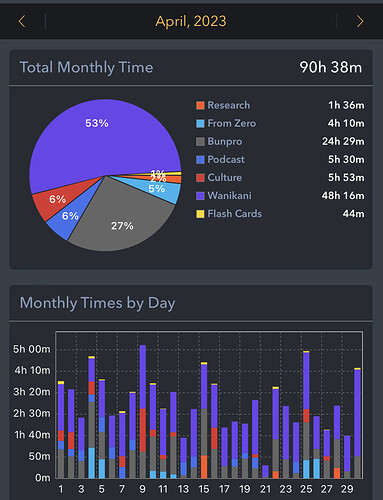Hello! I signed up to Bunpro less than a week ago and I’m enjoying the process so far. I noticed that grammar and vocab reviews are separate in beta. But since I’m just starting out on N5 grammar, I was wondering when I should start going over the vocab decks.
For some context, I’ve been studying Japanese on-and-off for the past decade. I took classes in college, reached Level 30 in WaniKani, and read a few online textbooks. I retained quite a bit more than I realize but I still feel rusty.
That said, I’m gonna start from square one and go over grammar in Bunpro like a total beginner. I’m also considering going back to Level 1 in WK to refresh my memory on everything.
When did y’all start tacking vocab here in Bunpro?
Thank you!
Another question to those who also use WK: How much time do you spend studying each day? And how much time do you allot on Bunpro and WK? Thank you!



 .
.

